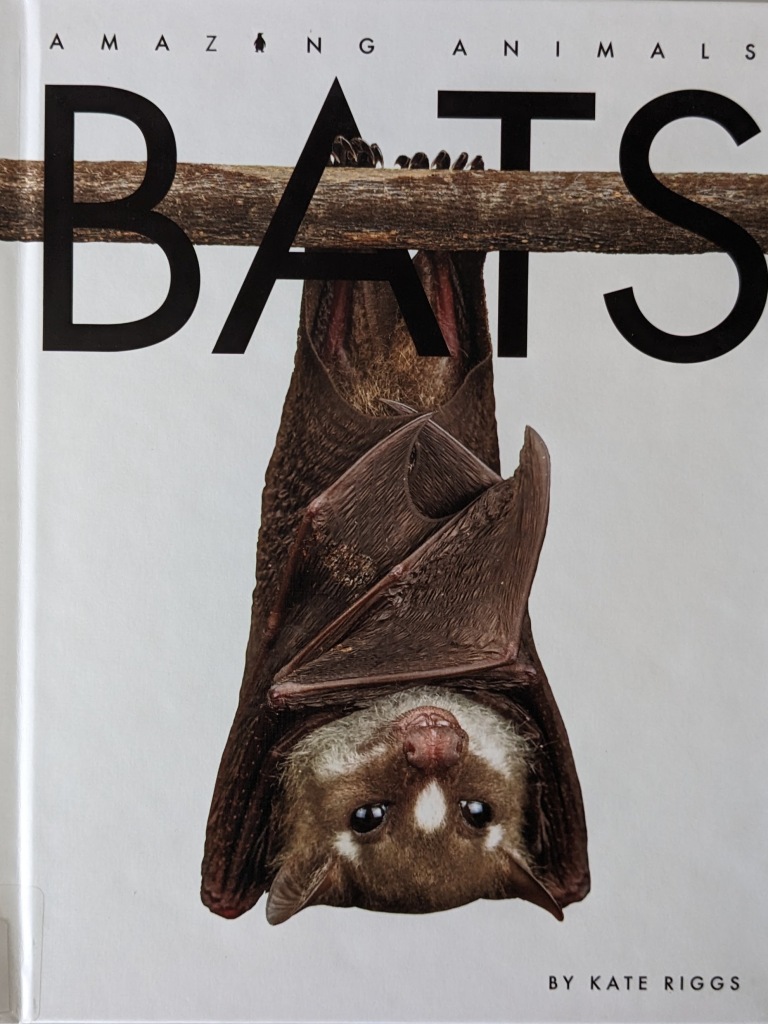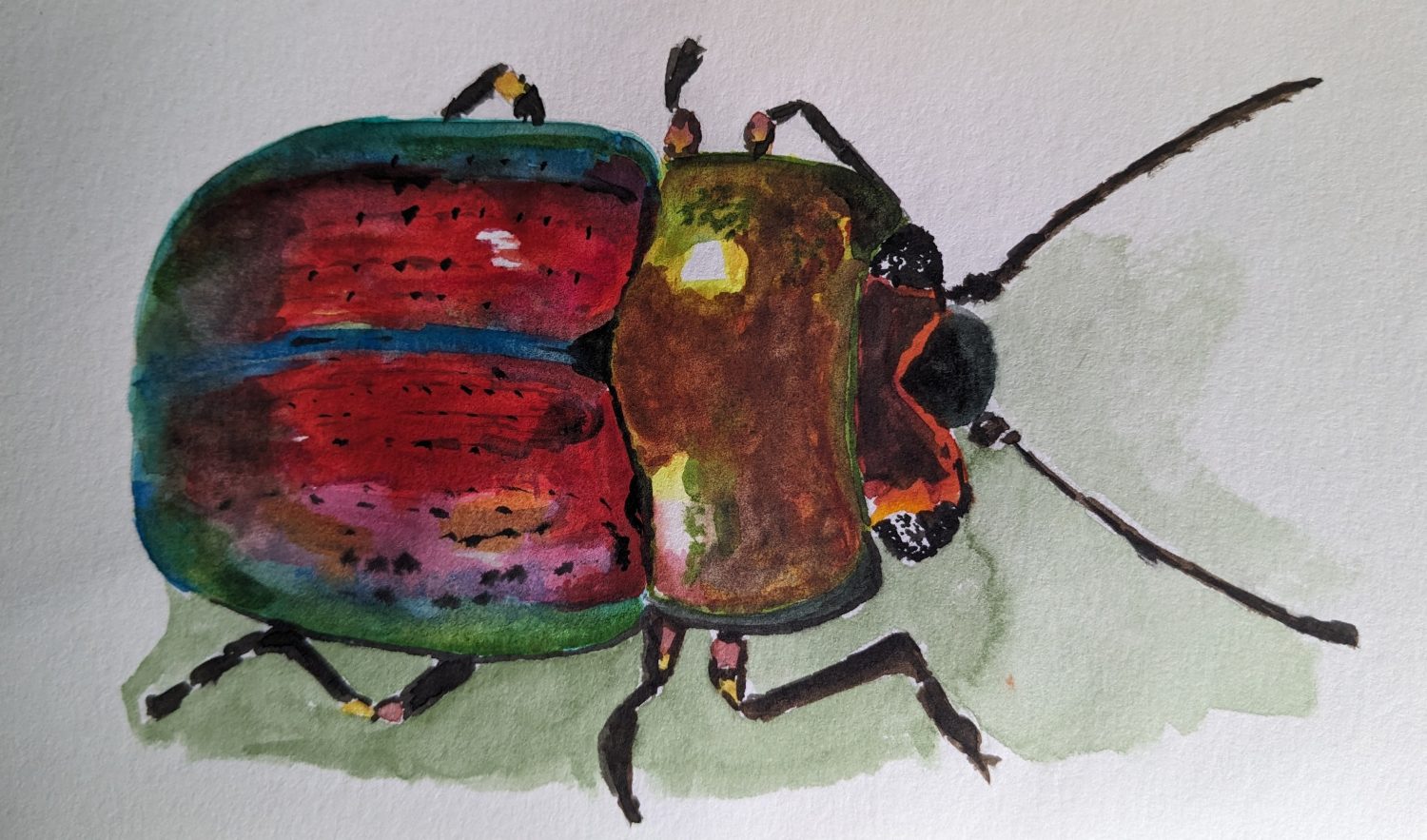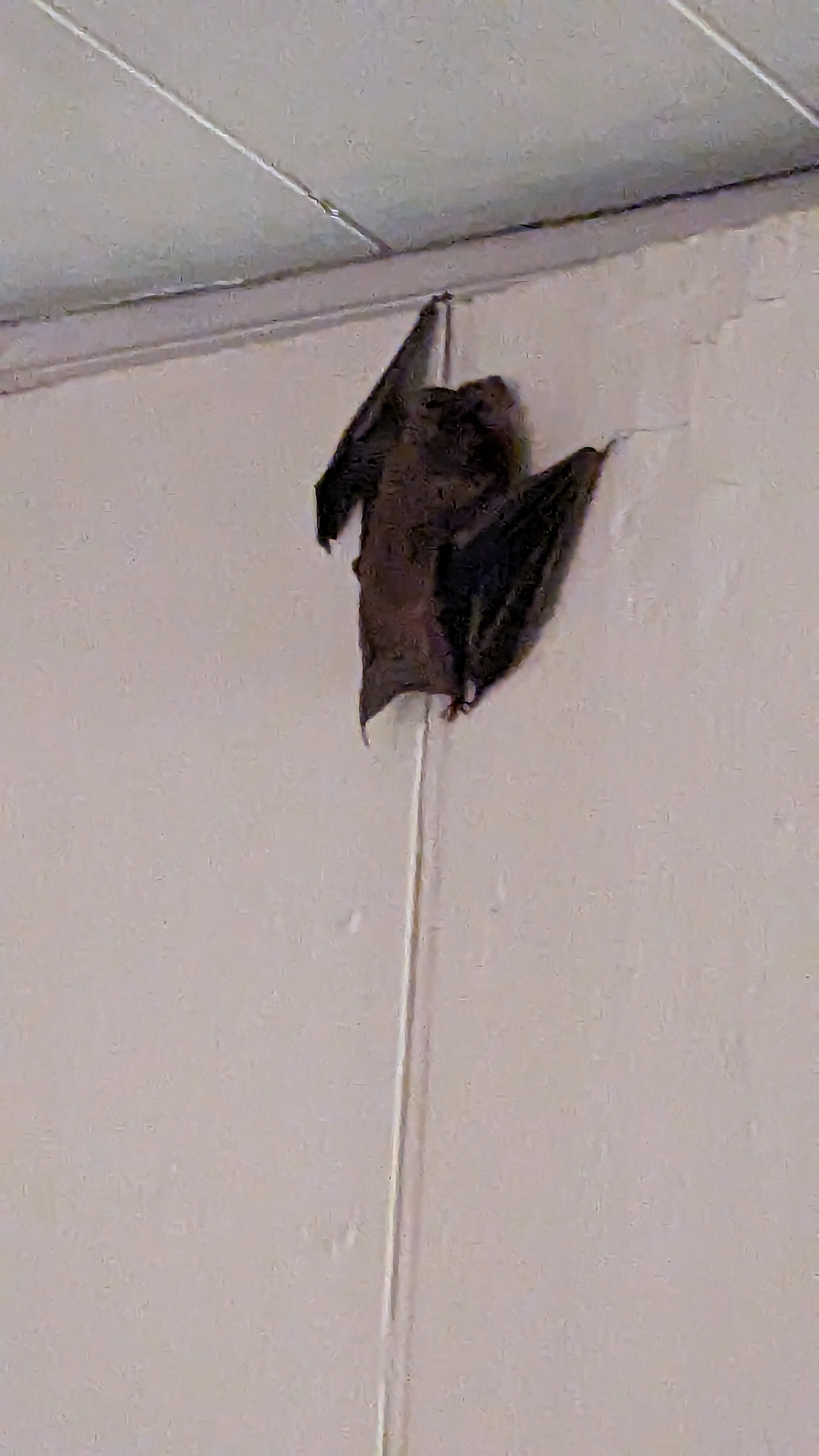
I picked up Amazing Animals: BATS by Kate Riggs (Creative Education, 2020) at the library the other week because just a few days before we had our own bat encounter. This has happened twice in our (gulp) 22 years here, but always in February. This time I wonder if it was because of the fire smoke we were experiencing from the Matt’s Creek fire at the time. We were reading in the living room when I sensed a shadow swoop by and looked up to see a bat had landed on the door to the back staircase. I have hand-fed bats years ago when I worked at a wildlife rehabilitation center during our time in Princeton, NJ. But I knew it was not wise to try to catch this guy or gal. He or she was very cute though.
The book BATS is very nicely done. I love the cover! The large text and gorgeous close-up illustrations are engaging and perfect for young readers. Shorter than most 32-page picture books, it manages to pack in a lot of information in its 24 pages. And, it is structured in a way that is different than other books on bats. Using terms I had not heard before – microbats and megabats – much of the text compares the two kinds. For example, microbats eat insects and megabats pollinate and spread fruit seeds because they eat fruit.
The very last page surprised me. It told a bat tale – an origin story about bats based on a culture which was not named. These tales have their place but I was surprised to find it in a science book. I wish it had been prefaced to tell what such tales are or were. Even better would have been a comparison with the evolution of bats as the only flying mammal. Nonetheless, I would recommend this book for your young reader. Knowledge is power and such knowledge helps dispel fear that many people have about bats.
How did our bat fare? We closed all doors to the upstairs. Propped open the closest outside door. We retreated to the library to watch a show and when we checked an hour later, he was gone. We are lucky to have so many doors in our house!




















